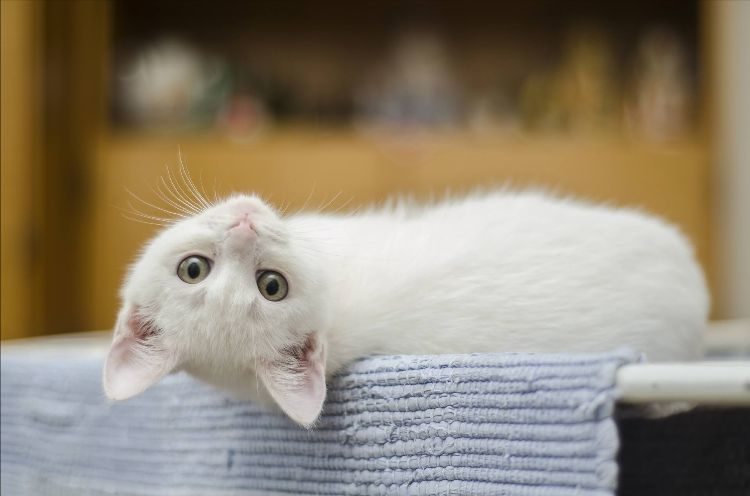By now, we all know that cats have many different ways they show affection. Kneading, for example, is one of them. Of course, there is also the head boop, where they bonk their little noggin into your face, usually at very inopportune moments – say, when you’re eating cereal or just simply not paying attention to them (you monster). Affection is one thing, but are there ways that cats are able to express the full spectrum of emotion? Are there tell-tale (tail?) signs to show us what they’re feeling? And if so, what are they?
Cat Tail Tells All
The number one way to read a cat’s thoughts is through their tail. For instance, if your Princess Pudding’s tail is upright and straight, she’s most likely very content. Does she tuck her tail between her legs? She is likely trying to show submission. This could mean that something is making her nervous, or she feels threatened, but she doesn’t want to fight. If her tail is in full Swiffer puff mode (think Halloween cat silhouette), it means that something’s got her really up in arms. Er, paws. She could be angry, frightened, or signaling to another cat not to mess with her.
Tail Translator
Cats can often be seen moving their tails about in a variety of ways. This can get confusing, but don’t worry – I, your tail translator, am here to clear the air. First off, if your cat is swishing her tail around while it’s upright, good news! It means she’s happy to see you. Contrary to popular belief, cats can and do “wag” their tails like puppies do when they’re happy. But just like humans, all cats are different, and some may be a bit too reserved to give a good full-on tail wag. But that certainly doesn’t mean they don’t love you!
Next is what we’ll call the “tail flick”. This is when a cat flicks her tail while it’s in a downright position. It’s easy to get this confused with a “wagging” tail, but kitties usually flick their tails while they’re in a seated position. Opposite of the tail wag, the tail flick indicates that your kitty is irritated. If you see your precious puss flicking her tail, it’s probably best to leave her alone for a little while.
Lastly, when you see your kitty tapping the very end of her tail, this simply means that something’s caught her attention. Again, it can be difficult to distinguish this from a “flick”, but if you look closely and discover that your cat is only tapping the very end of her tail (similar to the way a human might tap their finger), this is an indicator that she’s focused on something interesting.

How Embarrassing!
While we know that cats experience all sorts of different emotions such as happiness, contentment, and fear, it can be difficult to tell if your cat feels some of the more complex and subtle emotions. One example would be embarrassment. So, do cats get embarrassed?
I am reminded of a time when my first cat, Polly, was so focused on something that had caught her attention that she lost her balance and stumbled. Though they have a reputation for agility and always landing on their feet, cats do take a tumble from time to time. After she regained her composure, she immediately tried to lick herself and “brush it off” as if nothing happened. Like, whatever, no big deal, I’m fine, that totally didn’t just happen.
But does that mean that she was truly feeling what we understand as embarrassment? In order to feel embarrassed, one must have the ability to self-reflect. As of yet, it is not clear whether or not dogs and cats have this ability, but they certainly are able to react to situations in a way that would suggest that they do.
Simply put, what is clear is that cats can and do experience a gambit of emotions, and they have their special kitty language to communicate that to us. Whether they feel joyful, threatened, annoyed, or happy, they’re always reaching out to us in their own feline way to show us what they’re feeling. What’s most important is that we’re paying enough attention to notice.







